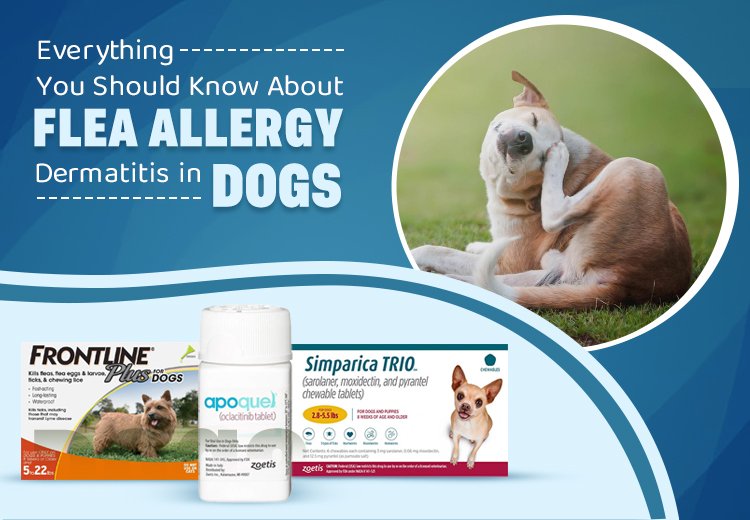Apr 01, 2024

No dog parent in the world would not know the damage these blood-sucking parasites cause to our canine friends. These tiny insects are the reason for many diseases dogs have to suffer from and flea allergy is one of them. Flea Allergy Dermatitis, also known as FAD, is one of the most common ailments associated with flea infestation.
This blog provides essential information on flea allergies in dogs. Read through to learn more.
Flea Allergy Dermatitis or flea sensitivity is an immunologic dermatological condition that occurs when the dog's immune system reacts to the saliva fleas inject into the dog's body after the flea bite. Flea allergy is most dominant in summer, however, flea infestation may continue all year round in warmer climates.
A report suggests that there has been a staggering 12-14% increase in Flea Allergy Dermatitis (FAD) cases over the last ten years. If not addressed promptly, flea allergies may advance and result in moderate to severe skin infections. Untreated flea infestations may also lead to flea tapeworm infections, anemia, bartonellosis, etc.
Dogs suffering from flea allergies show a series of symptoms. These signs vary according to the dog's frequency of exposure to fleas, duration of the exposure, hypersensitivity to fleas, etc.
Take a look at some of the common signs of Flea Allergy in dogs:
The first step towards treating flea allergies in pets is to provide symptomatic relief. The other important part of the treatment is to achieve complete flea control that includes the elimination of fleas on the dog, treatment of existing environmental flea infestation and the prevention of subsequent re-infestation.
When it comes to relieving allergy symptoms including pruritus (itching) associated with allergic dermatitis in dogs, Apoquel is one of the best treatments. Frontline Plus and Simparica Trio can work well to kill existing fleas and control the environmental flea populations. These treatments also help prevent the re-infestation of fleas.
Let's look at these highly effective flea allergy treatments one by one.
Indications: itching (pruritus) and other associated symptoms related to allergic dermatitis; control of atopic dermatitis
Active ingredient: oclacitinib
Dog age: 12 months and older
Treatment form: oral tablet
Dosage: as recommended by the veterinarian
Indications: kill adult fleas, flea eggs and flea larvae and prevent the growth of all flea life stages. It stops existing flea infestations and prevents the formation of new infestation. It also kills ticks, chewing lice and controls sarcoptic mange.
Active ingredients: fipronil, s-methoprene
Dog age: 8 weeks and older
Treatment form: topical (spot-on) liquid
Dosage: one dose per month
Indications: kill adult fleas, treat and prevent flea infestations; treatment and control of tick infestations; prevent heartworm disease; treat and control intestinal worm infections; prevention of lyme disease.
Active ingredients: sarolaner, moxidectin, pyrantel
Dog age: 8 weeks and older
Treatment form: oral chewable
Dosage: one chew per month
Flea Allergy Dermatitis (FAD) is a relatively common skin condition seen in dogs. The key to tackling this is to pay close attention to the signs, get to the underlying cause and provide dogs with appropriate treatments. Get in touch with the vet for advice or two.